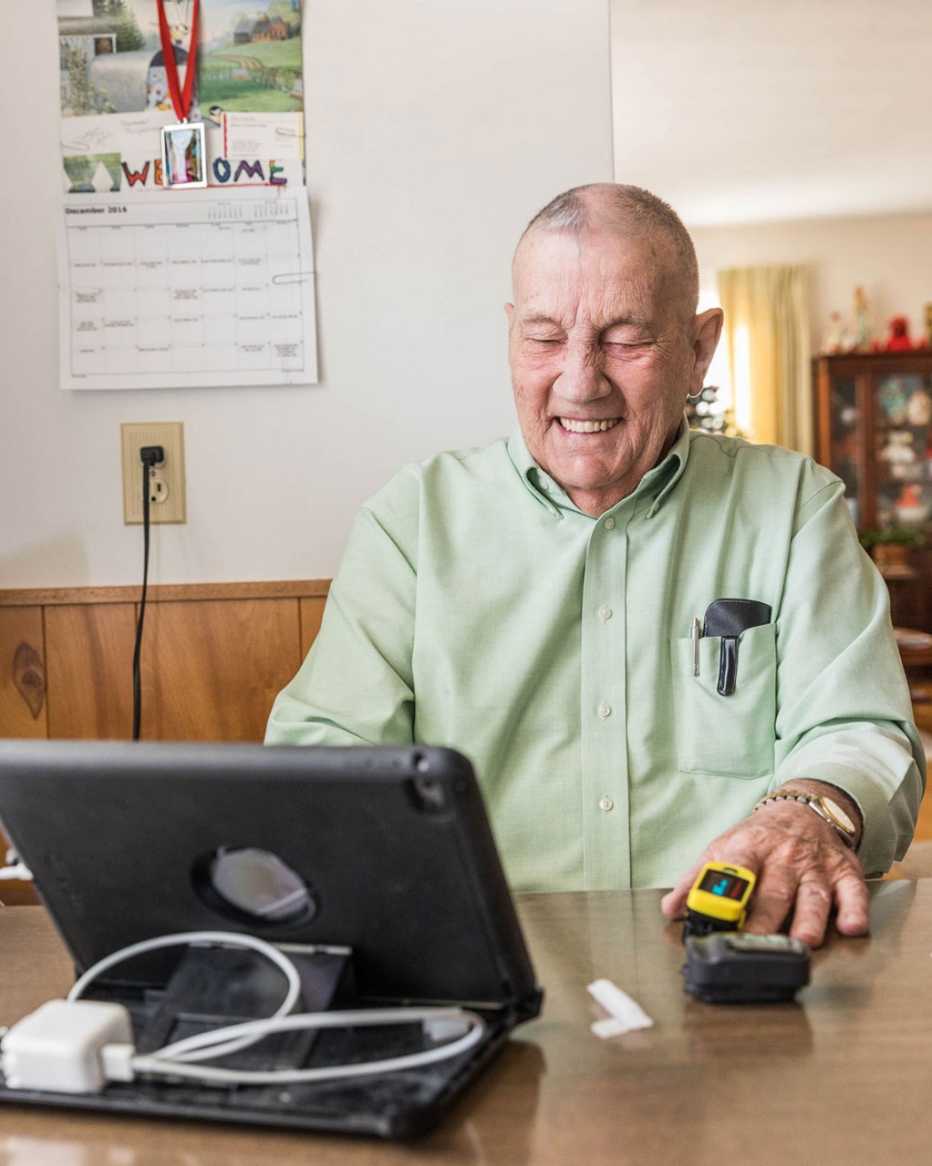AARP Hearing Center
Mercy Virtual has been called a hospital without patients, and the description is both true and false. There are neither beds nor patients in the gleaming four-story medical facility, which opened in late 2015 in Chesterfield, Missouri, a St. Louis suburb. But the facility is a hub of very real care for very real patients, in hospital beds and at home.
Part of the Mercy health care system, which spans 44 hospitals in the Midwest, Mercy Virtual is the incarnation in bricks and mortar of what has generally been consigned to the ether: virtual care.
Also referred to as telemedicine or telehealth, virtual care involves the remote diagnosis and treatment of patients by medical experts who are miles or even continents away. Heralded as a way to save money while providing quality care for patients who might not otherwise have access to specialists, telemedicine has exploded in growth during the past decade. One report claims that, globally, telemedicine will be a $36.2 billion industry by 2020, up from $14.3 billion in 2014. This new approach to health care is of particular importance to older Americans, because it creates the potential of putting a virtual doctor or nurse right into the homes of patients, as frequently as needed, monitoring their health and making real-time diagnoses and treatment adjustments.
While many health care providers are developing elaborate virtual-care operations, no other single initiative to date reaches the grand scale exemplified by Mercy Virtual, the first built-from-scratch virtual-care center in America. With a team of more than 700 physicians, nurses and support staff serving 750,000-plus patients last year, Mercy Virtual is an experiment in telemedicine writ large.
But does it work?


Gauging virtual care
Let me introduce myself: I am an academic physician specialized in internal medicine and preventive medicine, and the founding director of Yale University’s Prevention Research Center at Griffin Hospital. Until I turned my attention to Mercy, I was relatively uninitiated in the ways of virtual health care. In truth, my predispositions were mostly negative, and my skepticism ran deep. Wouldn’t bedside and virtual care conflict? Wouldn’t there often be added cost, without added benefit? Wouldn’t the technology prove daunting for homebound patients? Most important, wouldn’t virtual care be impersonal, without the human touch that so many of us see as central to the healer-patient relationship?
Mercy was eager to address my questions and hosted me for two full days, to observe its processes and meet with staff and patients. Federal privacy laws prohibited me from talking with random patients or viewing any case details; the patients I spoke with were cleared in advance by Mercy. That said, my access to staff, patients, facilities and information seemed more than sufficient for me to make a reliable assessment.
Seen from the outside, Mercy Virtual is a sleek and inviting place, the mostly glass facade offering glimpses of warm wood and large spaces. Inside, a wide central staircase and open layout are conducive to impromptu group conversations. At the same time, clever engineering allows for privacy protection in the patient-care areas; partitions on swivels look like a hybrid of giant wings, umbrellas and hot-air balloons. The effect would be more mystical than medical were it not for the state-of-the-art consoles and mass of neatly arrayed clinical information on multiple computer screens at the heart of each hub.
Inside every hub, nurses and physicians monitor computers that detail vital statistics for distant patients across multiple hospital locations. The same readings at the nurses’ station down the hall from a patient show up on Mercy Virtual’s computer screens, giving the experts a full view into a patient’s status. But the virtual model goes far beyond the usual patient-vitals review in scope. Among other things, it uses artificial intelligence to filter and flag medical information, automatically moving the patient with the most serious condition, or whose condition is deteriorating, to the top of the roster — a sort of automated triage not typically available to a doctor running rounds in a standard hospital. Another benefit: The virtual-care center is immune to the “alarm fatigue” — the exhaustion caused by seemingly never-ending tasks and crises — that plagues care providers in busy intensive care units.
Mercy Virtual runs 24 hours a day, like any other hospital. But because it is providing virtual “backup” for other hospitals, its services are needed most at night, when staffing at the remote bedside is thinnest. From a distance, the clinicians do many of the tasks that bedside physicians would do, such as monitor health readings, respond to alarms, answer nurses’ questions and make medication decisions.


































































